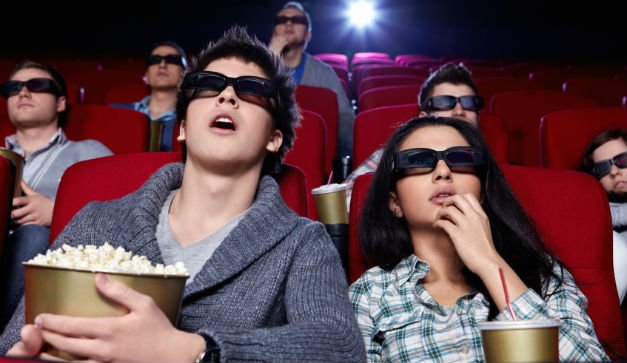* THE Cinema is a Psychotherapeutic TOOL *
Has it never happened to you that after seeing a movie you have changed your way of seeing a problem? Or have you adopted a different perspective to face new situations? And has it served to take distance in a hard moment of your life? The benefits of cinema as a psychotherapeutic tool are multiple. Therefore, it is increasingly used by health professionals.

Visualizing films allows viewers and, therefore, patients, to obtain information of a very different nature: linguistic, visuospatial, interpersonal and intrapsychic. That is to say, the commonly known as "cineterapia" can make psychological treatment a complete, integral and intersensory learning space.
Based on the books
For Bruce Skalarew, psychiatrist and psychoanalyst co-chair of the Forum for Psychoanalytic Study of Film, therapeutics has followed the same lines as bibliotherapy. That is, the use of books and reading as in clinical practice. This doctor defines the seventh art as a tool that helps improve mental health. In the same way, consider this therapeutic means as a good complement to the traditional ones.

Walz explains that cinema as a psychotherapeutic tool allows the psychologist to rely on image, music, tone, characters, spaces and theatrical elements. In addition, they have the power to facilitate the understanding of oneself and perform what he calls "emotional discharge". Ultimately, this art, he says, helps change our habits and evolve.
"Therapeutics can be a powerful catalyst for the healing and growth of one who is open to the possibility of learning how movies affect us, and of trying to see certain films with real attention."
-Birgit Walz-
Personal reflection
What would I do if something like this happened to me? How would my partner react if that misfortune happened to us? Sometimes movies make us think of situations that we would otherwise be unable to imagine. We often put ourselves in the shoes of the characters and try to think or see through them. This helps those who are in psychotherapeutic treatment to make an introspection of their thoughts, feelings and emotions, both present and future.
How to apply it?
The first thing that has to be done, according to Gary Solomon -one of the first psychologists to approach the use of movies as therapy-, is to choose those films or shorts that reflect the patient's problem. That is, the tape must be as similar as possible to the current or traumatic situation of the victim.
It is essential that the therapist and the person talk before viewing the film. It is that both understand that you have to perform a conscious exercise of analysis of it, so that the professional can recognize and examine the patient's reactions.
"Dream as if you were eternal, and live as if it were your last day."
-James Dean-
After viewing, it is convenient that the affected explain the connections and similarities that he has been finding between the film and his life. It is good to use the imagination and identify with a character in the film (Berg-Cross, Jennings, and Baruch, 1990).
Empathy and new perspective
One of the strengths of this technique is that it can improve patients' social and communication skills. It serves as a practical example of situations in which empathy can be developed and awareness of one's feelings, emotions and longings.
With this, we can put into practice the so-called theory of mind, that is, the ability to understand our own emotional processes and to understand and reflect on the feelings or thoughts of others. And all this through a sequence of images and ingenious dialogues, thanks to the magic of cinema.
The conflicts that we observe in criminal protagonists help us to fix our moral values.

In addition, this technique allows working with specific scenes, focusing even more on the issue to be addressed. In addition, the characters can be analyzed in detail, being able to appreciate each change and detail as many times as you want to repeat the film. This allows finding more similarities and differences between the behavior of the patient and that of the actor.
Cinema as a psychotherapeutic tool is a great unknown. Although it is increasingly being used as a complementary strategy to traditional practice. However, although in most patients it works, it is necessary to avoid performing it with people suffering from psychotic disorders. In these cases, there is no guarantee that the therapy will report benefits.
" The metaphor governs the technique of cinema as a therapeutic tool "




Transfer 1 STEEM or 1 Steem Dollar to a-0-0 if you want me to resteem your last blog post and get upvotes from over 32,900 followers. https://steemit.com/@a-0-0